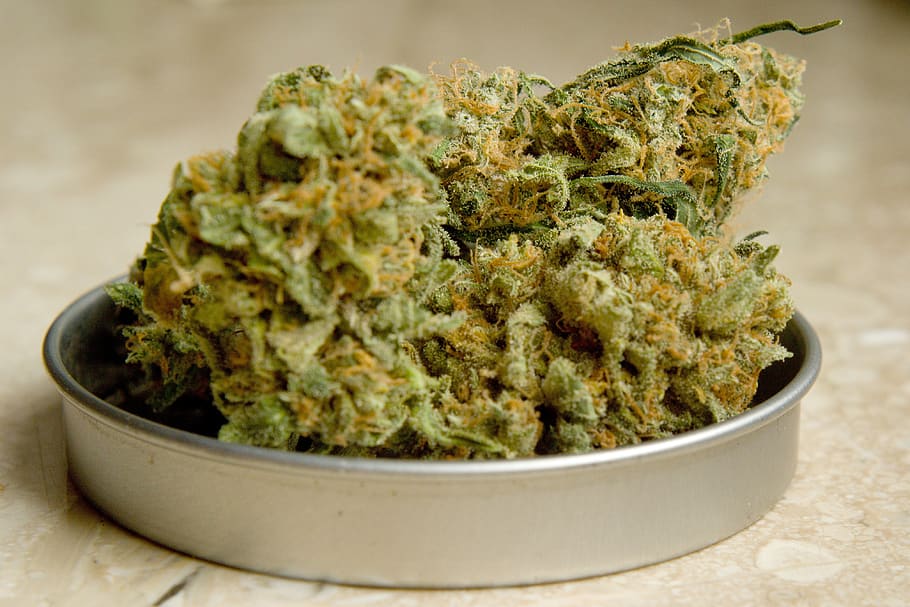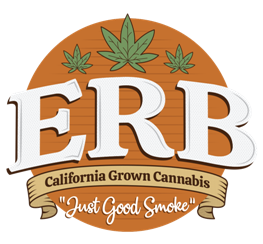
Cannabinoids vs Cannabidiols | Simply ERB
Cannabinoids vs Cannabidiols: What’s the Difference?
At ERB we pride ourselves on our ability to connect with our customers and we especially understand the learning curve that our new customers face when it comes to understanding the science behind the cannabis products they buy. Cannabis consumers want to know that the products they are buying are safe, effective, and grown by great people, but we have also found that many of our customers want to ‘geek out’ and learn about the science behind the products and flowers they share with friends and family.
Understanding the science behind cannabis can be difficult even if you have a science background and each week it seems like there is a new discovery being made. Our team is constantly reading new research papers that are being published that discuss the therapeutic and pharmacological properties of cannabinoids and cannabidiols (CBDs). These two words will often get confused by journalists and even healthcare professionals, but they are quite different and SHOULD NOT be used interchangeably. To get straight to the point, cannabidiol (CBD) is a type of cannabinoid, but not all cannabinoids are cannabidiols (CBDs). Cannabinoids and cannabidiols may look similar, but cannabinoids refer to a ‘family’ of pharmacological compounds while cannabidiol (CBD) refers to a ‘specific cannabinoid’.
We’ve found that one of the best ways to begin your educational journey is to develop a basic understanding of the differences between cannabinoids and cannabidiol (CBD). At ERB we like to keep things simple and the best way to remember the differences between cannabinoids v.s. Cannabidiol (CBD) is to use the ‘dog analogy’. Dogs are members of the canine family of animals and under this family, there are hundreds of different dog breeds. Some dogs are family dogs like a golden retriever, while other dogs are wild like the wolf or coyote. A wolf is considered a canine, but not all canines are considered wolves. Are you still with us???
The relationship between cannabinoids and cannabidiol is very similar to the dog analogy in the way that cannabidiol is a member of the cannabinoid family of plant chemicals, but not all cannabinoids are considered cannabidiol (CBD). Cannabidiol is just one of the pharmacological compounds within the much broader family of cannabinoids that are found in cannabis plants. Similar to how the canine family has hundreds of different dog breeds, cannabinoids have over a hundred different cannabinoids. Studies have found that there are only a handful of major cannabinoids, but to date, scientists have discovered and isolated 113 different cannabinoids. To learn more about the diversity of the cannabinoid family please check out our blog posts, How Many Cannabinoids are There?
What are cannabinoids?
Cannabinoids are bioactive compounds or pharmacological compounds that are topics of discussion when it comes to treating and managing many diseases and illnesses. These plant chemicals are only produced and secreted in the trichomes of the plant and Current research on cannabinoids has been limited to CBD, THC, and a handful of other major cannabinoids, but researchers are discovering new cannabinoids each year.
There are three categories of cannabinoids that are currently being studied, plant-based cannabinoids, endocannabinoids that are produced by our own body and synthetic cannabinoids that are produced in a lab. At ERB we only concern ourselves with plant-based cannabinoids and endocannabinoids, but many pharmaceutical companies are getting into the business of patenting and promoting synthetic cannabinoids. Many reports argue that these pharmaceutical products are less effective than natural medicines and some synthetic cannabinoid medications have been found to be deadly.
Due to the federal prohibition on cannabis, some of the most studied cannabinoids are endocannabinoids that are naturally produced in our bodies. If our body becomes injured, endocannabinoids become more prominent near the injury. Endocannabinoid receptors also become more prevalent around areas of inflammation and on tumor cells. Endocannabinoids are present in women’s breast milk (stimulates babies appetites), and these natural compounds play a role in the “runner’s high” that athletes experience.
Cannabinoids that are ingested internally or applied topically work by calming excessive nerve firing and promoting cell stability. Certain plant chemicals (terpenes, carotenoids, and flavonoids) can even support our body’s natural production of endocannabinoids and play a role in how many receptors our cell membranes produce.
As regulations continue to loosen up, we expect more cannabinoids to get discovered and we believe this new knowledge will allow plant breeders to create new strains that highlight specific cannabinoid profiles. As research progresses we believe seed breeders and cannabis growers will be able to develop more personalized medical therapies and we will be able to produce recreational products that are optimized to the user’s specific needs. This knowledge will also be used to create safer cannabis strains that can eliminate compounds that may create anxiety or paranoia and to develop strains of cannabis that are more prone to use during certain times of the day. The more we can learn about the various cannabinoid profiles the better we will become at meeting the consumers’ specific demands. Scientists are also discovering that cannabinoids tend to change shape over time and as they change molecular shapes they change the effects of each cannabis experience. An example of this is freshly cut cannabis has high concentrations of acid form cannabinoids and as the cannabis cures many of these acids degrade or are decarboxylated.
What is cannabidiol?
The great, or not so great thing about CBD is that it doesn’t get you stoned! CBD does however have a tremendous value when it comes to providing health and wellness benefits.The demand for cannabis strains of cannabis that are rich in CBD is at an all time high and we expect more and more consumers are going to get involved with CBD rich strains of cannabis for medicinal purposes over the high.
By now you understand that cannabidiol (CBD) is a member of the cannabinoid family, but it is also the most abundant non-psychoactive cannabinoid that is found in cannabis. CBD is legal in all 50 states and can provide many of the same benefits that THC has been associated with. CBD is anti-inflammatory, antimicrobial, can alleviate pain, and is neuroprotective. CBD doesn’t bind directly to our cannabinoid receptors but plays a role in our optimizing our endocannabinoid system indirectly.
CBD is gaining traction all over the world due to its ability to be cultivated in hemp plants that have negligible quantities of tetrahydrocannabinol (THC) and CBD will most likely become the most studied cannabinoid in the world due to its high concentrations, stability, and non-psychoactive therapeutic benefits.
CBD products have recently gotten a tremendous amount of attention in the press, but we urge our ERB community to not forget about the other cannabinoids that work together to create synergistic pharmacological benefits. Our co-founders and team are big believers in the ‘entourage effect’ in the cannabis flowers and products we produce and we believe cannabis is best consumed in its whole plant form.
Very little is known about the exact dose of CBD, but we do know that it is non-toxic and shows zero health risks. 25 mg of CBD seems to be a healthy dose according to many cannabis nonprofits and educational resources, but there is no science to back this up. The bioavailability of CBD through our digestive tract is believed to be less than 10%, but the absorption rate could be increased if secondary cannabinoids and secondary metabolites like terpenes are present, this has been dubbed the entourage effect. The absorption of CBD and other bioactive chemicals is much more efficient if it is absorbed through the buccal and sublingual mucosa.
Entourage Effect
Conventional thinking has told us that pure compounds provide the best medicine, but we are now finding that plant chemicals work together in a synergistic way to increase their wellness properties. This plant synergy has been dubbed the Entourage Effect and studies are finding that cannabinoid medications work best when they aren’t individually isolated.
CBD may be getting all the recent press, but researchers have actually found that cannabis or hemp therapies are more effective when the ‘full-spectrum’ of cannabinoids and secondary metabolites are present. Each cannabis cultivar won’t have the full 113 different cannabinoids, but each strain has a unique blend and ratio that add to its specific pharmacological benefits.
Researchers have found that purified CBD actually creates a “bell-shaped dose-response was observed”. In other words, CBD in a purified form doesn’t pack the punch like whole plant CBD or whole flower. The 2015 animal study showed purified CBD was limited in the response as the dosage was increased while the whole plant extract response was increased as the dosage was increased.
The cannabis connoisseurs that make up our core customer base keep coming back for our flower and products because they know we have great respect for the growing, harvesting, drying, and storage process. All of these steps play a role in the final cannabinoid profile of our cannabis products and we’re going to continually educate our consumers about the science behind their cannabinoid products. Join our entourage by signing up to our newsletter and we’ll keep you up to speed with all the latest cannabinoid-based studies and news.
Do you have more questions or concerns about CBD or the other cannabinoids that are in ERB’s products? Please leave a comment or shoot us an email.

